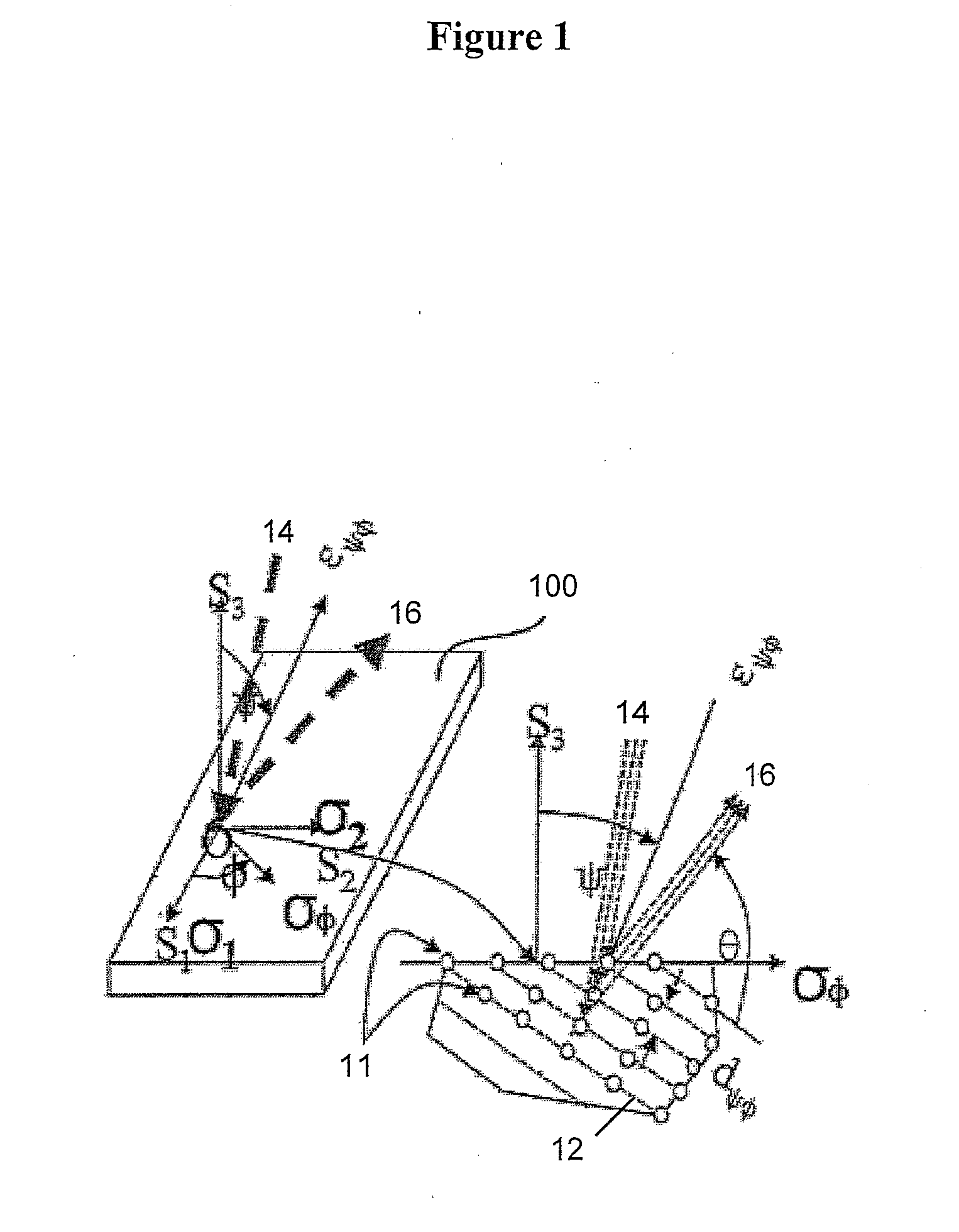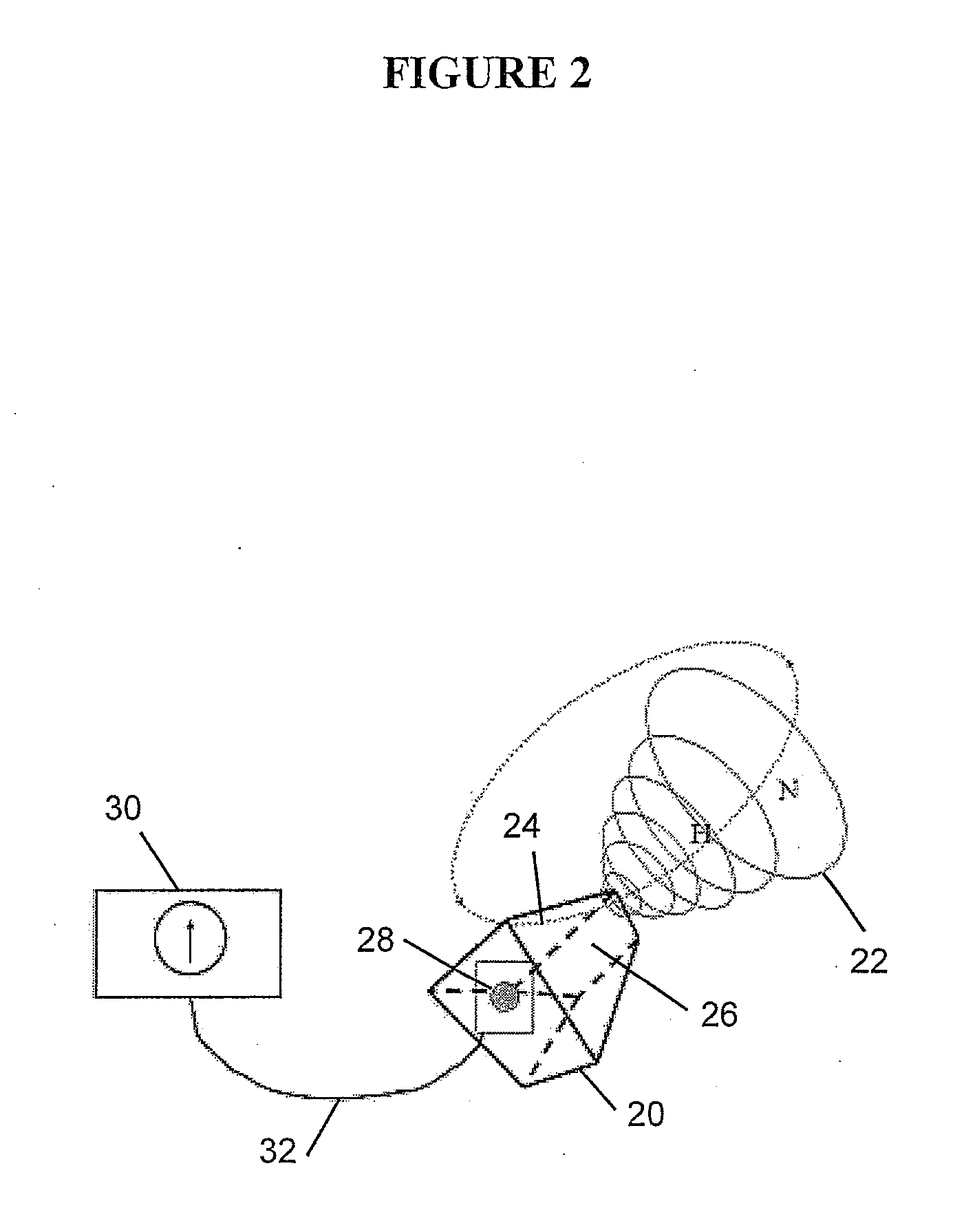Non-destructive determination of magnetic permeability tensor in materials of arbitrary shape
a magnetic permeability tensor and non-destructive technology, applied in the direction of permeability measurement, magnetic measurement, instruments, etc., can solve the problems of material destruction, material destructive, and complex known methods
- Summary
- Abstract
- Description
- Claims
- Application Information
AI Technical Summary
Problems solved by technology
Method used
Image
Examples
Embodiment Construction
[0027]Referring first to FIG. 1, the first step in the method of the invention is to determine whether there is stress in the subject material, so that compensation for this factor can be made in the determination of the magnetic permeability of the material. The stress is measured at a selected surface of the material, by an X-ray diffraction process, using known equipment. The figure shows the measurement of strain at the selected location at which the incident X-ray beam is shown as 14 and the diffracted X-ray beam as 16. The principal stress components are shown as σl and σ2, in directions S1 and S2, respectively, at the location O of strain measurement εψφ on the surface 100, with atomic planes 12 and their spacing dψφ, such that
dψϕ-d0d0
denotes the strain εψφ measured in the horizontal φ-direction along the σφ-stress direction, and at the ψ-angle from the normal σ11×σ22 to the material surface formed by the principal directions σ11 and σ22; and dψφ denotes the spacing of (imagi...
PUM
 Login to View More
Login to View More Abstract
Description
Claims
Application Information
 Login to View More
Login to View More - R&D
- Intellectual Property
- Life Sciences
- Materials
- Tech Scout
- Unparalleled Data Quality
- Higher Quality Content
- 60% Fewer Hallucinations
Browse by: Latest US Patents, China's latest patents, Technical Efficacy Thesaurus, Application Domain, Technology Topic, Popular Technical Reports.
© 2025 PatSnap. All rights reserved.Legal|Privacy policy|Modern Slavery Act Transparency Statement|Sitemap|About US| Contact US: help@patsnap.com



